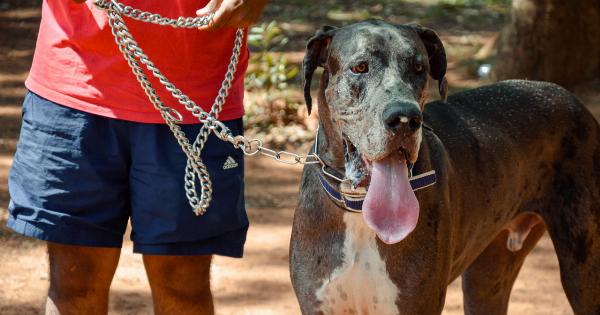Calling your dog is a vital skill every dog owner should master. Whether you want to call your dog for basic obedience or in emergency situations, having a reliable recall is essential for the safety and well-being of your furry friend.
In this article, we will explore various techniques and tips to help you become a master of calling your dog.
The Importance of a Strong Recall
A strong recall is crucial in many situations. Imagine you are at the park with your dog, and suddenly they spot a squirrel and start chasing it.
Without an effective recall, you may find yourself in a stressful and potentially dangerous situation, struggling to get your dog back. A strong recall can prevent accidents, keep your dog safe, and allow you to have off-leash adventures without the constant fear of them running off.
Building a Foundation
Before you can achieve a reliable recall, you need to build a solid foundation. Start by teaching your dog their name. Use positive reinforcement techniques, such as treats or praise, whenever they respond to their name.
Once your dog knows their name, you can move on to teaching them a recall cue, like “come” or “here.”.
Begin in a distraction-free environment, such as your home or a quiet backyard. Use a happy and enthusiastic tone of voice when calling your dog. Reward them generously with treats and praise when they come to you.
Gradually increase the level of distractions as your dog becomes more proficient in responding to the recall cue.
Positive Reinforcement Techniques
Positive reinforcement is key to mastering the art of calling your dog. Make sure you always use positive and rewarding experiences when practicing the recall. Never punish or scold your dog when they come to you, even if they took a while to respond.
This will only create negative associations with coming when called.
Use high-value treats, such as small pieces of cooked chicken or cheese, to reward your dog for coming to you. Motivate them to seek you out by making yourself exciting and fun to be around.
Engage in play, offer a game of tug-of-war, or use a favorite toy as an additional reward. The more enjoyable the experience, the more likely your dog will come back to you every time you call.
Consistency is Key
Consistency is vital when training your dog to come when called. Use the recall cue consistently and always follow through with rewards. Make sure everyone in your household uses the same recall cue and reinforces the behavior with positive rewards.
Inconsistent training can confuse your dog and make them less responsive to your calls.
Practice the recall cue in various environments, gradually increasing the level of distractions. Start in a quiet room, then move to the backyard, and eventually progress to busy parks or crowded areas.
Repeating the recall cue in different scenarios will help your dog generalize the behavior and respond reliably in any situation.
Problem-Solving Challenges
While training your dog to come when called, you may encounter some challenges along the way. Here are some common problems and how to overcome them:.
1. Your dog doesn’t come when called
If your dog doesn’t come when called, avoid chasing them or scolding them. This will only reinforce the idea that coming to you is a negative experience.
Instead, try running in the opposite direction, using an excited tone of voice, or using a whistle to get their attention. Reinforce the behavior by rewarding your dog when they eventually come to you.
2. Your dog comes, but then runs off again
If your dog has a tendency to come briefly and then run off again, it’s essential to work on increasing their stay and focus. Practice short stays with your dog, gradually building up the duration over time.
Use positive reinforcement techniques to reward your dog for staying with you before releasing them again to play or explore.
3. Your dog is easily distracted
If your dog is easily distracted during recall training, start by reducing the level of distractions and gradually build up. Use a long training leash to prevent your dog from running off too far when distractions are present.
Reward them generously for ignoring distractions and coming to you instead.
4. Your dog has had a negative experience with recall
If your dog has had a negative experience with recall, such as being scolded or punished in the past, you may need to retrain the behavior using positive reinforcement techniques.
Start from scratch, using treats and praise to create positive associations with coming when called.
Advanced Recall Techniques
Once your dog has mastered the basic recall, you can move on to advanced techniques. Here are a few ideas to take your dog’s recall to the next level:.
1. Distance Recall
Practice calling your dog from longer distances. Start by calling them from just a few feet away, gradually increasing the distance as they become more proficient. Use a long training leash to maintain control while practicing distance recall.
2. Recall with Distractions
Work on recalling your dog in the presence of distractions. Practice in busy parks, around other dogs, or with tempting distractions such as food or toys.
Gradually increase the difficulty level as your dog becomes more focused and reliable in ignoring distractions.
3. Emergency Recall
Teach your dog a separate recall cue that indicates an emergency situation. Use a distinct and urgent tone of voice, and reinforce the behavior with high-value rewards. This cue can be a lifesaver in situations where immediate response is essential.
Remember, practice makes perfect!
Mastering the art of calling your dog takes time and patience. Consistent training, positive reinforcement, and gradual progress are key elements to achieve a reliable recall.
Always keep training sessions fun and enjoyable for your dog, and never forget the importance of a strong recall for their safety and well-being.



























